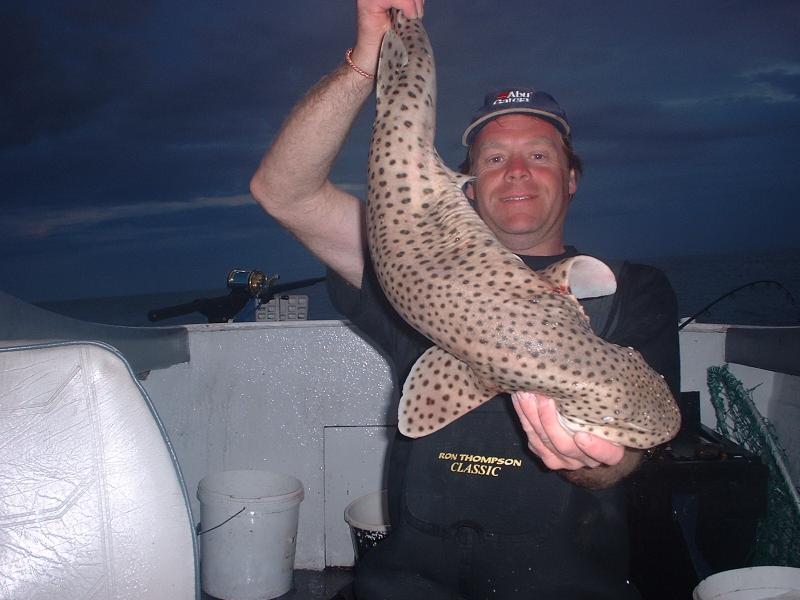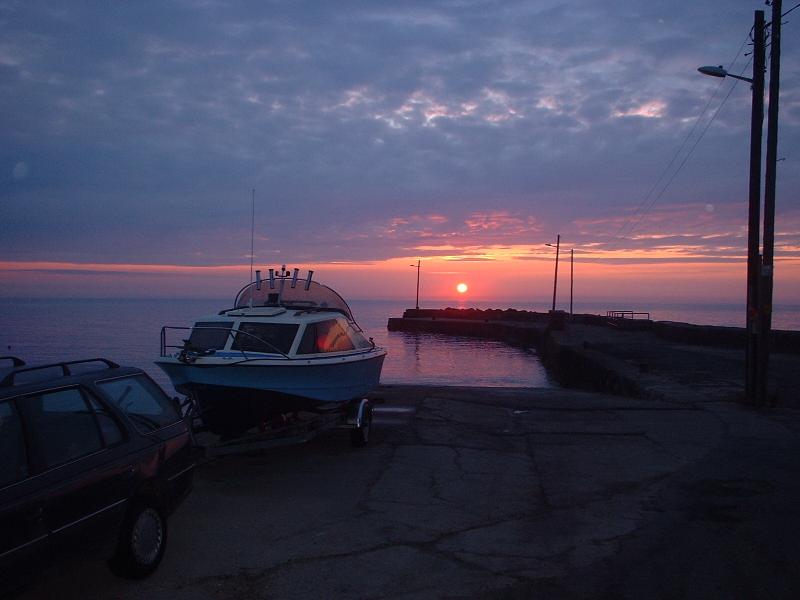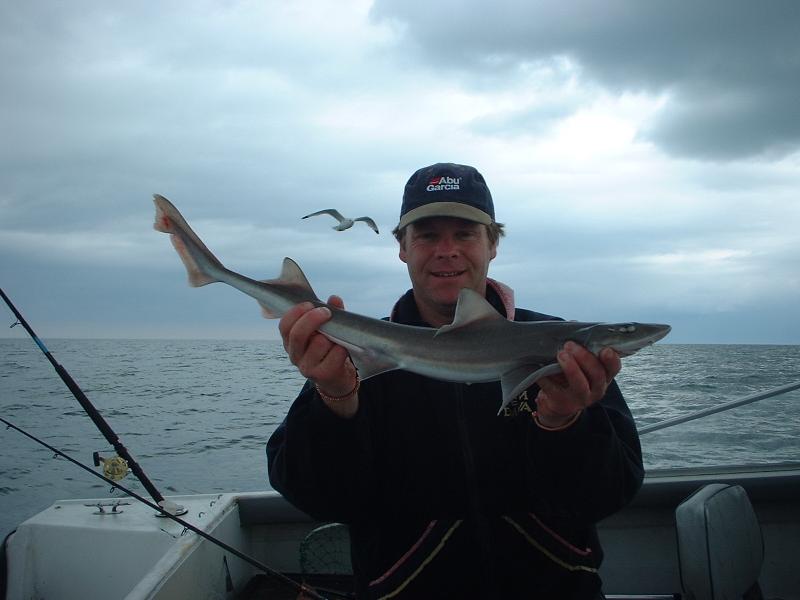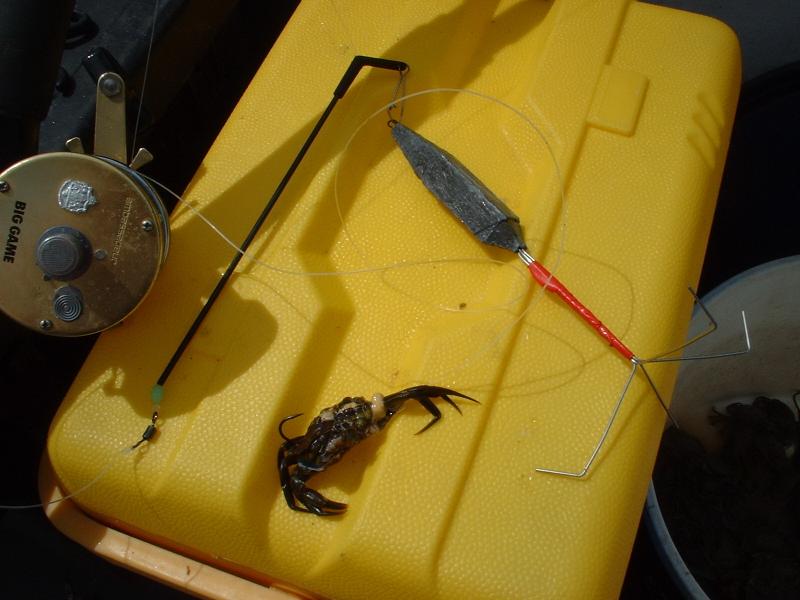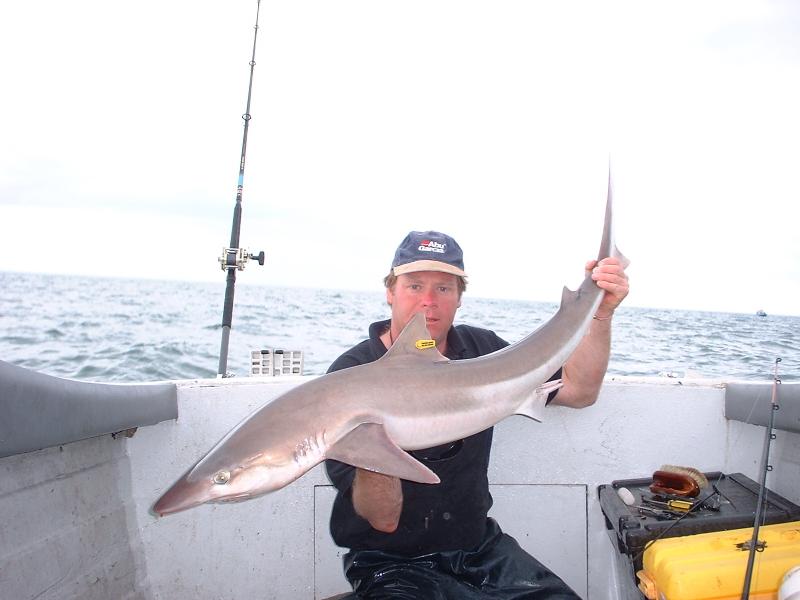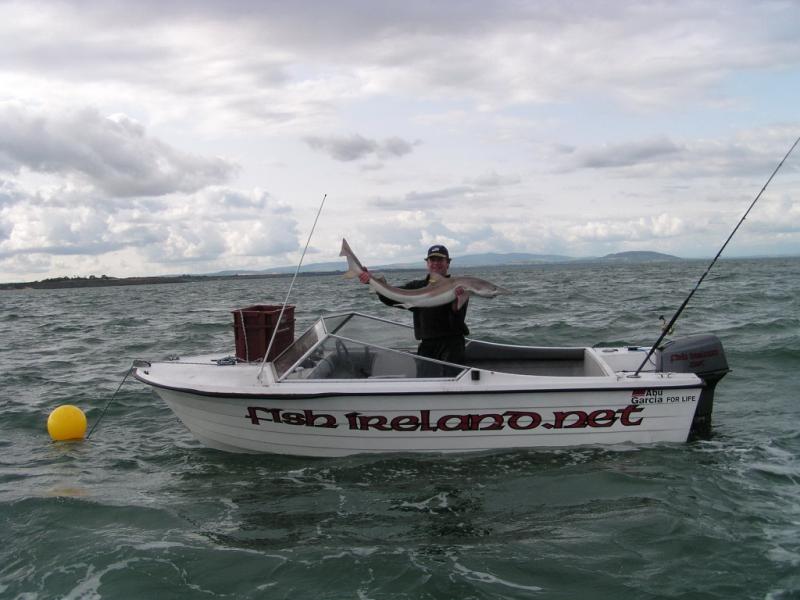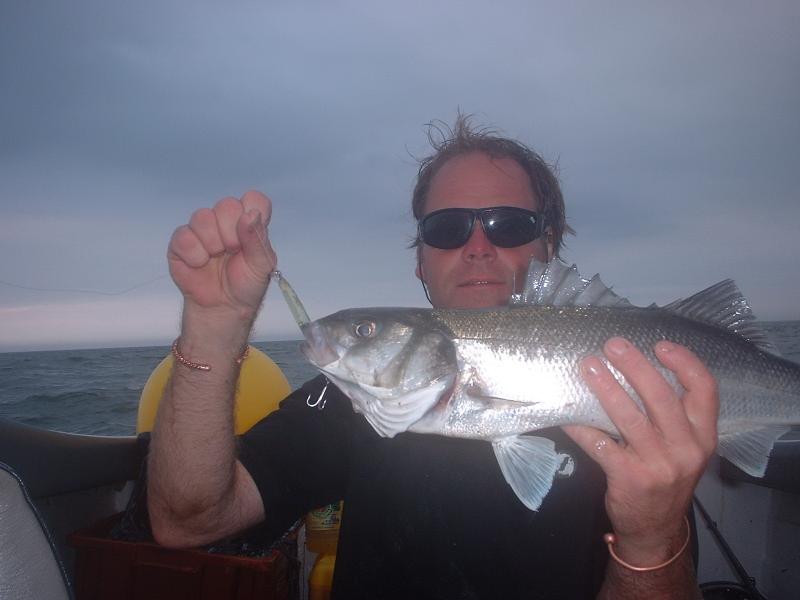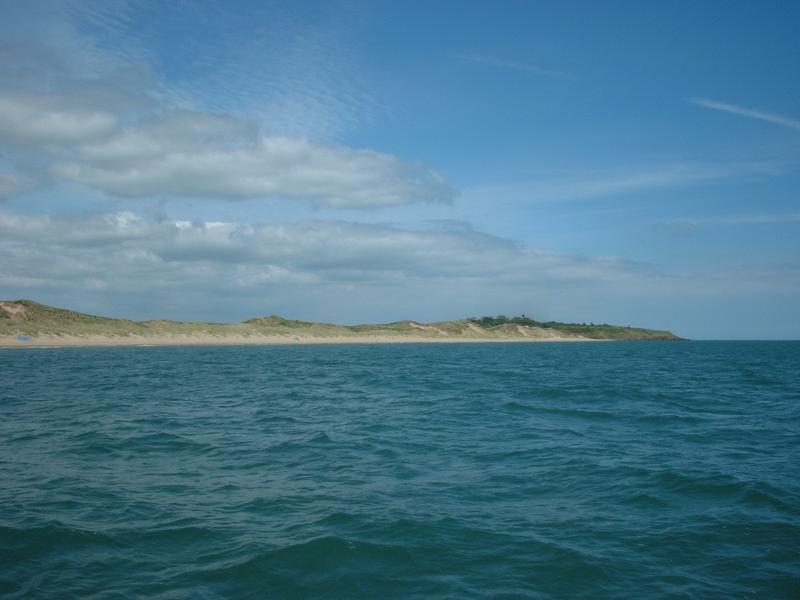A venture to the south east coast
Cahore Harbour, County Wexford
It was about six years ago, whilst standing on the banks of the River Barrow at St.Mullins, fishing for Twaite Shad, that friend and well-known Dublin angler, Dennis Butler first wet my appetite for an adventure out of Cahore.
Sentences such as “packs of Tope” and “large numbers of Smooth-hound on light tackle” drove my imagination wild.
Years passed by all too quickly, but every spring, around May and June, my thoughts drifted off to how Cahore would be fishing, but this year, finding some time on my hands, I decided to give it a try. I teamed up with a couple of angling mates, Darryl Aston and Grant Cordiner, and we dragged our boats down from the North to the idyllic surroundings of the Wexford coastline.
On arrival, I found Cahore to be relatively untouched and unspoilt, a small, quiet harbour in a picturesque setting. The old stone pier had apparently been extended by ninety feet, back in 1905, and gives a reasonable amount of shelter from the elements. Cahore Sea Angling Club was instrumental in the recent rebuilding and improvement of the slipway, and this provides excellent and easy launching for the small boat owner. However, an easterly wind can cause major problems and can be hazardous. Nearby Courtown harbour is a safer option under these easterly conditions.
Cahore Harbour at sunrise
The first day began poorly, with a moderate breeze creating heavy seas, but as we were planning a four-day trip, we were not duly concerned. A member of the local angling club generously gave us a mark to try, lying north of the harbour and slightly sheltered from the headland. Our boats were launched and we eagerly steamed out. Although this turned out to be a slow day, I did manage to catch plenty of Dogfish, along with my first ever Smooth hound. Not a large fish, but fabulous to see one. It appears that Smooth hound don’t seem to venture much further north than Dundalk, and personally, it is always a thrill to capture a new species. They put up a surprisingly impressive fight, which is strange for a fish that feeds primarily on crustaceans, and I now understand why they are sought after so much by shore anglers. Even on the boat, they refused to give in, and I found it easier to unhook them over the side of the boat with a t-bar, rather than chase them round the deck!
My first ever Smooth Hound
As the day drifted into afternoon, the wind eased and the sea settled quite quickly, so a decision was made to venture out to St. George’s Channel. This is a long gulley lying southeast of the harbour, and approximately three to four miles offshore, clearly marked by the Rusk Buoy. A popular hot spot, and personally, a mark I have looked forward to fishing for a long time.
The seabed here is featureless, with an average depth of forty feet, but drops off rapidly to over sixty feet in the channel. It is easy to see why this is a fish holding area. We anchored at the far side of the buoy in the deeper water, with the usual bags of rubby dubby lashed to the anchor chain, in a bid to attract nearby predators. My plan at this mark was to target Tope on standard down-tide tackle and smoothounds using typical uptide gear, and I shall explain my reasoning.
Although uptiding for Tope is an accepted and exciting form of angling, the large amount of Dogfish present simply destroy a small fish bait in no time at all, so a whole Mackerel bait is required, and this can be difficult to cast on light tackle. To rig for Tope, attach a sliding boom to the main reel line, a bead, and then a strong swivel. The bead protects the knot and acts as a shock absorber preventing the swivel from damaging the boom. Tie on six feet of at least 150lbs breaking strain clear nylon as a rubbing trace. This is a necessity, as Tope, along with all members of the shark family, have skin covered in a layer of minute teeth known as denticles that can make short work of a lighter line.
Approximately sixteen inches of 150lbs breaking strain nylon coated wire and an 8/0 bronze O’Shaughnessy hook completes the rig. On the rare occasion that a Tope is deeply hooked, it is safer for the fish, if the angler cuts the wire trace as close to the hook as possible, allowing it quickly rust away causing no adverse effects. The size of lead required is a decision that has to be made on the day, to suit the tide. It needs to be just heavy enough to keep the bait tight to the seabed, and I found that a range between six ounces and two pounds should cover all eventualities.
As for the Smooth hound up-tide rig, I had to do some homework, and a phone call to Dennis put me right in this area. A small tubi-boom with two or three feet of fifty pound breaking strain clear nylon, and a Kamasan B940 Aberdeen hook, in sizes 3/0 or 4/0. These are a light hook but extremely strong and proved superb when using whole or half peeler crab baits. Although Smooth hound do not possess teeth as such, they have powerful crushing jaws similar to the ray family, and a lighter hook length would risk a bite off. Fine bait elastic is needed to secure the crab bait to the hook for casting, and also helps to squeeze out any juices that Smooth hound find so irresistible. This was cast up-tide and well away from the boat, allowing a large bow in the line, until the eight-ounce grip lead caught well into the seabed. The plan here was to leave enough room between the two baits, allowing space to play a hard fighting Tope should one come along.
Shortly after the boat had settled, and the two rods were locked in their holders, the tell tale “nod” of Dogfish appeared on both rods. Although it is always good to see a bite so soon, “doggies” can be extremely frustrating when other larger species are being targeted. However, after an hour or so, a few decent sized Smooth hound made an appearance on the up-tider. This helped to break the monotony, when suddenly; a blistering run on the downtide rod told me the Tope had arrived. I have had quite a few Tope in the past, but this put up a tremendous fight in the fast-running shallow water, and once lifted onto the boat, measured, and tagged; it weighed in at forty-one pounds, my first specimen Tope, and a fabulous end to my first day in Cahore.
Tope fight extremely well in these fast-running, shallow waters
Day two, and the sea state had deteriorated somewhat, so we decided to target the bank. This lies south of the harbour, but a short distance off-shore and runs out at right angles to the beach. It is a famous Bass mark, and on inspection with my fish finder, I could see why. The depth rises from forty feet, dramatically upwards over the bank at nineteen feet deep, and then drops off sharply to fifty feet. This is on a northerly drift. I decided to anchor slightly up-tide, and fish a sandeel on a flying collar rig, and let it drop down over the bank. Not a single Bass appeared, but bites were hectic, with over forty Dogfish, seven Dabs and one Grey Gurnard landed. By afternoon, the seas began to ease, so we steamed back out to the channel again, hoping to run into some more of those hard-hitting Tope.
We fished late, under flat calm conditions, boating another fifteen Dogfish, fourteen Smooth hounds and two fine Bull Huss, both nudging the ten-pound mark on the scales. No more Tope today unfortunately, but a successful day none the less. The morning of day three, and the wind had swung east, a dramatic change from the night before, and one that left us no choice but to contemplate the previous days sport, and to watch the hoards of children and adults alike, catching large shore crabs, velvet swimmers and huge spider crabs from the pier on hand lines with bacon rind as bait. This is practically a sport here, and at the end of the day; dozens of crabs are released on the slipway, to be caught again the next day. A new concept in catch and release! On hindsight, a day spoilt for the boat could be a good day to shore fish, and the beach gear will be packed in future, as there are many fine beaches in this area.
Day four was our last day, and we were desperately hoping the wind had swung back to the southwest, and so it had, leaving a choppy, but reasonably comfortable sea. We steamed straight to the channel, dropped anchors with plenty of rubby dubby attached, and an attitude of Tope or bust. Immediately, the usual queue of Dogfish appeared, but as the bites tapered away, the Tope moved in. The session was busy, with five Tope landed and three lost, varying greatly in sizes from four pounds to thirty-seven pounds. One of the lost fish managed to bite through one hundred pounds breaking strain wire after a fantastic fight, which left me awestruck, bewildered and frustrated all at the same time. Another dozen “smoothies” topped up the catch rate before the tide run became too fast, and the bites diminished.
Plenty of Tope action on the last day
Darryl decided to give the bank one last try before heading home, and found those Bass that everyone talks about here. Soon, all three boats were drifting over the bank, picking up a fish a drift on small white rubber shads, bass plugs, and even white feather rigs. Interestingly, the Bass were coughing up small Whiting, obviously feeding on them, which would explain the attraction to the white feathers. Catch and release must be employed with Bass on this sandbank, to guarantee superb sport for years to come. On a calmer day, fly fishing would be excellent, unfortunately the strong breeze prevented me from trying, but I am definitely planning a return visit.
Great shoals of "schoolies"
I would like to take this opportunity to thank the members of the Cahore Sea Angling Club for their hospitality and advice during our stay. The use of the clubhouse, and their chest freezers were invaluable, and was instrumental in the success and enjoyment of our trip. The Wexford coastline is famous for its shore angling, and as a hint to the water quality, Courtown, Curracloe, Rosslare, Duncannon, Ballymoney and Kilmuckridge all fly the blue flag of cleanliness. The North Beach, as its name suggests, lies north of Cahore harbour. It can be very productive after a storm and produces Bass, Dogfish and Flounder, with the possibility of Whiting and Codling in winter. During our stay in Cahore, a shore angler took a fine Bass of seven pounds off the northerly point.
Directly south lies Morriscastle, another storm beach, and fishes well after dark. Flounder, Dogfish, Dabs and Bass are the main quarry, with Smooth hound possible from May. The pier produces Bass, Flounder, Dabs, Dogfish and the occasional Smooth hound.
Surf beaches are abundant in County Wexford
Tackle requirements
For the Smooth hounds, light tackle will give maximum sport. An uptider capable of casting ten ounces of lead, coupled with a multiplier in the 6500- 7500 size is perfect, or a standard twenty pound class boat rod will suffice, but it is really the strength of tidal flow that dictates how light you can get away with. Make sure you have a large selection of up-tide grip leads with you. A good design such as Gemini leads, will allow a smaller lead to be used, for the same effect.
To tackle the hard fighting Tope, a rod in the twenty to thirty class will cope without problem; again, it is the tidal flow and lead capabilities of the rod that dictates this. A lighter rod could be used, but really only during slack water or whilst drifting. Reels of sizes 7000-10,000 are more than enough. On my trip, leads ranging from six ounces at slack water, to two pounds when the tide picked up, were sufficient to hold the large baits tight to the seabed.
Bait requirements
Mackerel is the main bait for most species in Cahore, and due to the amount of Dogfish present, allow twenty to thirty per day. As Mackerel are in short supply in this area, and only show up towards the end of July, bring plenty with you. A good tip is to bring a few pre-made bags of rubby dubby, this works well here for Tope, Bull Huss, rays and of course, Dogfish.
Peeler crab is a must for the Smooth hounds. Frozen crab works just as well as fresh peelers, but there is the difficulty of keeping it frozen until use. When the Smooth hound are here in numbers, and are feeding well, they will readily accept standard hardback crabs, but don’t depend on this. Bass will take sandeel, but we actually caught more fish on artificial lures on this occasion.
For shore angling, peeler crab will target Bass, Ray and Smooth hounds, with lugworm and ragworm for the smaller species such as Flounder, Dabs, Codling and Whiting. As with most areas of Ireland, fresh Mackerel is unbeatable for most species.
Main species
Dogfish, Smooth hound, Tope, Bull Huss, Thornback Ray, Dabs, Flounder, Bass, Whiting, Codling, Sea Trout and Gurnard. Spurdog were here in numbers at one time, but commercial fishing has taken its toll. The Smooth hound arrive in May, closely followed by the Tope. The Codling and Whiting are abundant in winter.
How to get there
From Dublin, take the N11 to Wexford, turn off at Gorey and follow the road signs to Courtown, ballygarrett, and then left to Cahore.
Useful contacts
Redmond’s Stores, Ballygarrett (055) 27181
Webb’s Sports, Main Street, Gorey (055) 21119
S & N Murphy, Kilmuckridge
Tracks, Main Street, gorey (055) 21141
Cahore Sea Angling Club (055) 27453




